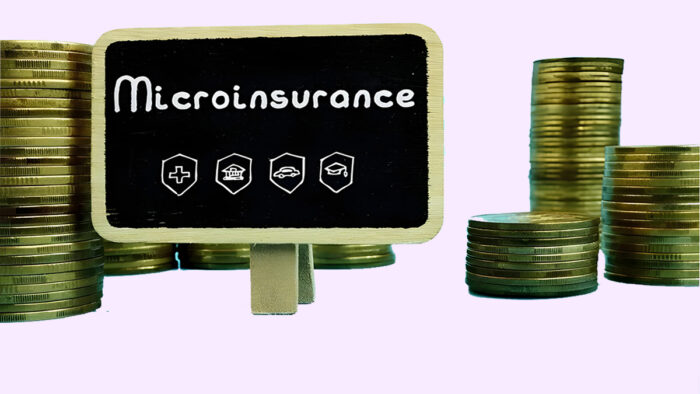In the socio-economic landscape, the poor are often the least protected from several risks and perils. A large number of people from low-income backgrounds in developing countries often do not have access to formal insurance.Hence, the establishment of microinsurance would help provide insurance services to people from low-income backgrounds.

Those who are unable to afford commercial insurance and access certain protections, such as disability, health, life, and unemployment coverage, are provided with microinsurance in order to improve their standards of living.
In recent times, microinsurance has been a viable tool for individuals who come from weaker economic sectors, providing them with protection against financial crisis and other unforeseen events, ultimately making it accessible and affordable for the poor.
In this article, we will provide in-depth information about microinsurance, how it works, who it is specially designed for, and other tips that would help widen your knowledge about this type of insurance. Ensure you read to the end of this article, so you don’t miss out on valid information.
What Is microinsurance?
Microinsurance is a type of insurance designed to meet the critical needs of low-income families and individuals who seek conventional insurance policies. It is a protection to serve those who come from poor backgrounds by granting them access to certain coverage, such as life, health, or crop insurance.
Microinsurance often comes with a lower cost than typical insurance policies, and it is capable of covering certain risks like illness, accidental injury, death, and property loss. It guarantees financial protection for people who ordinarily may not be able to access insurance benefits.
How Does Microinsurance Work?
Micro Insurance is an affiliate of Micro Finance; this insurance provides banking and lending services to individuals from low-income backgrounds.
It is mostly available in developing countries where insurance markets are non-existent or not fully developed, ultimately exposing a large number of people to various risks such as illnesses, loss of property, limited access to health care services, and other services that would help improve their standard of living.
In addition, Micro Insurance offers coverage for a wide range of risks, including loss of property, loss of crops and livestock, death, injury, illness, and the list goes on and on. This insurance is being offered by numerous microfinance institutions and organizations, which include community associations, health care providers, banks, and other licensed insurance companies.
However, the qualifying factors depend on the microinsurance institution you intend to obtain this insurance from. There are certain criteria you must meet before you are considered eligible for microinsurance. So, it is important to review the insurance policy, including the terms and conditions, to get a better understanding of how it works.
Types of Microinsurance
Highlighted below are different types of microinsurance:
- Life Micro Insurance:This is a type of insurance that offers protection to individuals in the event of disability or death. It is designed specifically to provide financial protection for those who seek insurance that would help cover potential risks that can pose threats to their lives.
- Health Micro Insurance:This type of insurance offers coverage for expenses associated with health care services and medical treatment. It is designed for those who come from weaker sectors of society and may not be able to afford the cost associated with health care services.
- Crop Micro Insurance:This insurance is specially designed for small farmers, and it offers coverage for crop damage caused by natural calamities or other factors.
- Natural Disasters: Microinsurance for natural disasters offers protection against certain risks and damages caused by natural factors, like floods, winds, earthquakes, or any other form of disaster caused by nature.
- Non-Natural Disasters:This type of microinsurance offers coverage for disasters that are not caused by nature, such as fire, theft, and liability.
What Does Microinsurance Not Cover?
Although microinsurance offers coverage for a wide range of risks, it does not provide comprehensive coverage that offers protection against all perils. There are limitations to what it covers, unlike traditional insurance, which may offer more coverage.
For instance, a microinsurance policy will only cover the cost associated with the burial of the deceased policyholder and help beneficiaries pay back outstanding loans; it does not replace the lost income of the deceased, which can be feasible under a traditional life insurance policy.
Who Needs Micro insurance?
The following are the groups of people that should consider getting microinsurance:
- Individuals from low-income households who do not have access to conventional insurance policies.
- Those who demand quality health care services that are not provided in their country.
- Individuals with an injury or a form of disability.
- Surviving spouse who seeks financial protection to pay off some of their debts.
Importance of Microinsurance
There are several benefits that microinsurance offers individuals. Out of many of them, we have curated some, which include the following:
- It offers a sense of security to individuals who come from low-income households.
- The cost of premiums is low, hence its affordability.
- Microinsurance ensures inclusiveness in society, which cuts across socio-economic stereotypes.
- It enhances economic growth and financial stability for low-income individuals and their families.
- Microinsurance policies also feature fast claims, which makes the insurance accessible.
Microinsurance has provided extensive benefits tailored to meet the needs of individuals who come from poor backgrounds. With this insurance, individuals and families from underrepresented backgrounds can access insurance policies that offer protection for their lives, health, and other specific needs.



